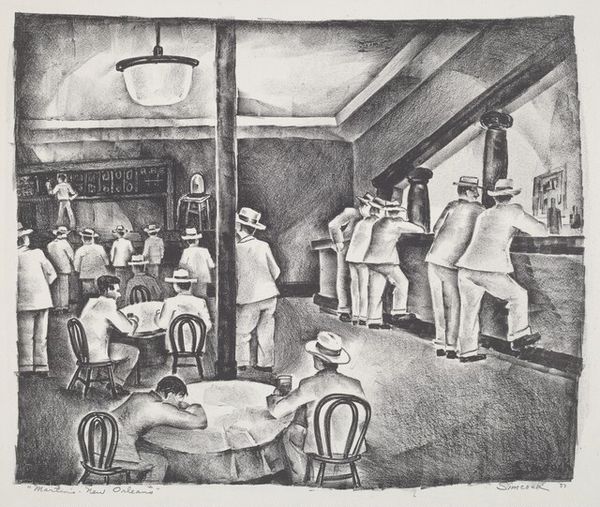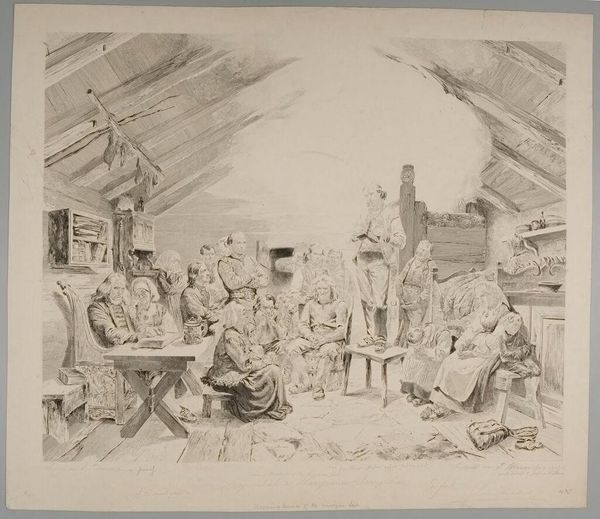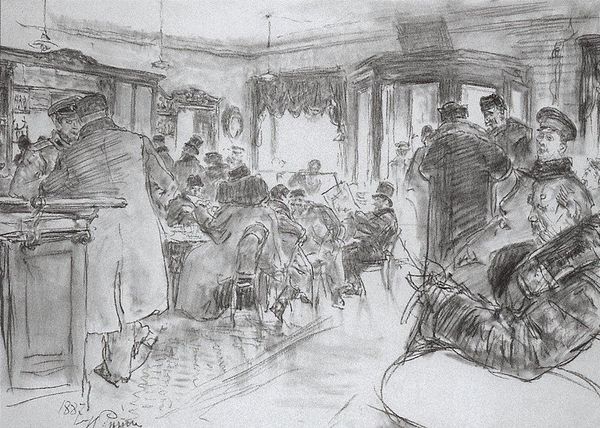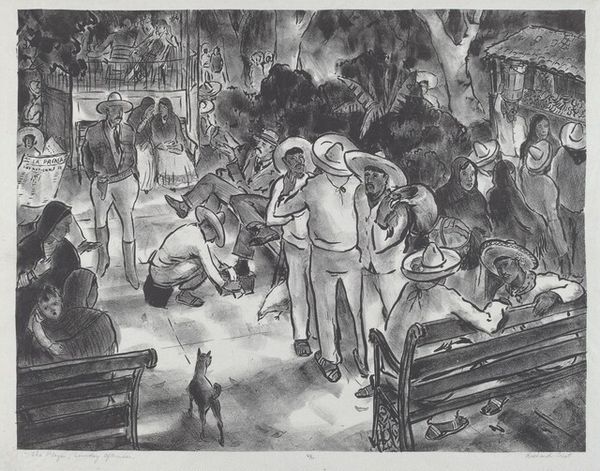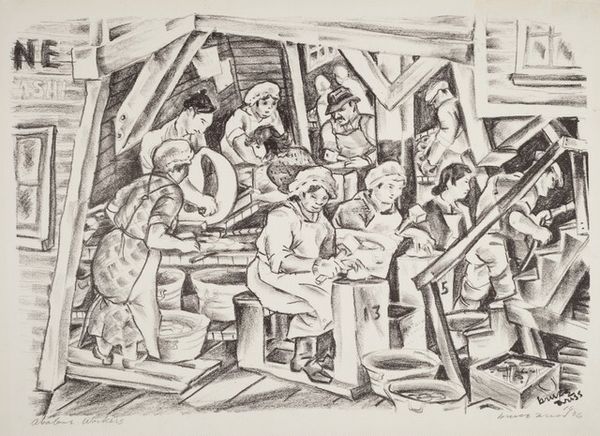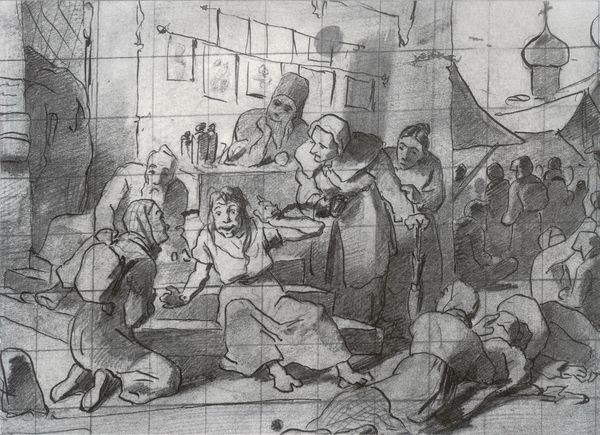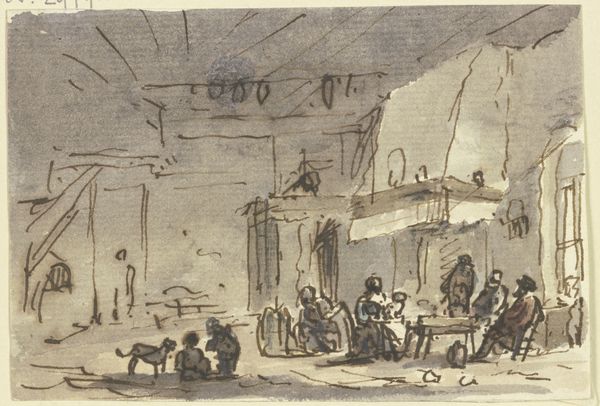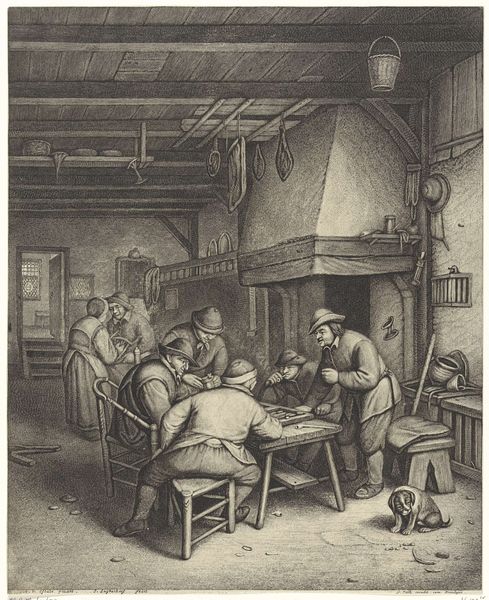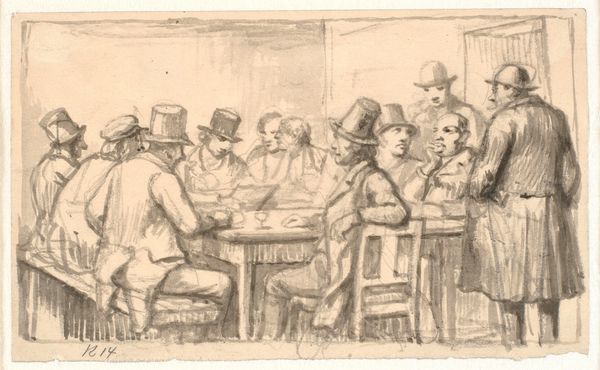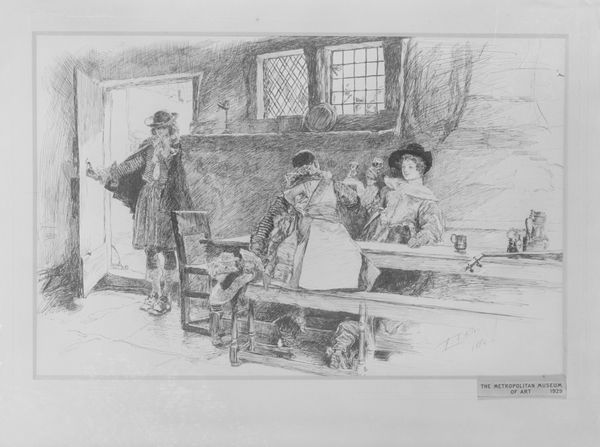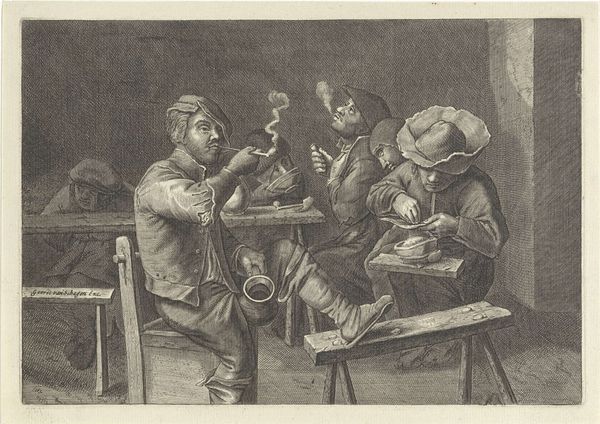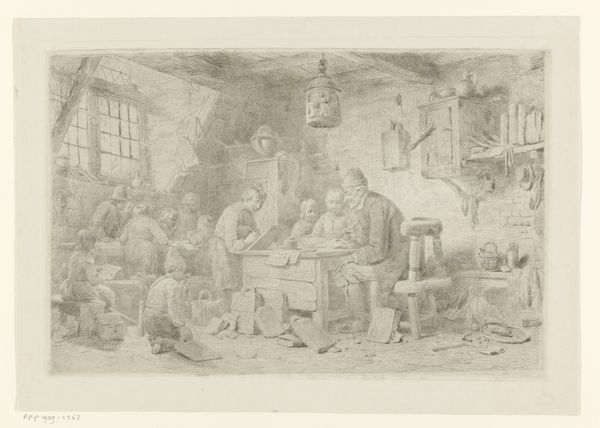
drawing, print, pencil
#
pencil drawn
#
drawing
# print
#
pencil sketch
#
social-realism
#
pencil drawing
#
group-portraits
#
pencil
#
cityscape
#
genre-painting
#
modernism
#
realism
Dimensions: image: 227 x 302 mm sheet: 287 x 372 mm
Copyright: National Gallery of Art: CC0 1.0
Editor: So, this is Max Arthur Cohn's "Lunch Hour," a print from 1938 done in pencil. The composition has this interesting contrast between the structural rigidity of the setting and the men relaxing. What social narratives do you think this work explores? Curator: I see it as a powerful statement on labor and leisure during the Depression era. Cohn, working in a social realism style, doesn’t just depict a casual break. The very *act* of capturing these workers humanizes a class often made invisible by industry and capital. Notice their attire, the tools behind them, and the architecture... Where do you think these contextual elements point? Editor: It definitely emphasizes their working-class status. Their caps and sturdy clothes are a stark contrast to the suits of factory owners. Is the choice of medium significant here? Curator: Absolutely. Pencil, with its inherent accessibility, democratizes the image-making process. Cohn isn’t using oil paints and fancy techniques; he’s documenting a scene directly, like a visual journalist. But also think about what "lunch hour" actually means. Is it truly *their* hour? Or is it merely an allocated respite *within* a system of labor? Editor: That's a great point! It speaks to the power dynamics at play. Curator: Precisely. How does Cohn use visual language – composition, light, shadow – to convey the inherent dignity of labor, but also perhaps its constraints? The fact they have to carve out rest says something. Editor: I see how Cohn's work is not just an observation, but a commentary on the socio-economic conditions of the time and how those are related to issues of equality and dignity! Thanks! Curator: Exactly. Art like this provides a visual record and prompts ongoing questions. And considering this through intersectional lenses gives it added power to shape and engage critical contemporary conversations.
Comments
No comments
Be the first to comment and join the conversation on the ultimate creative platform.
